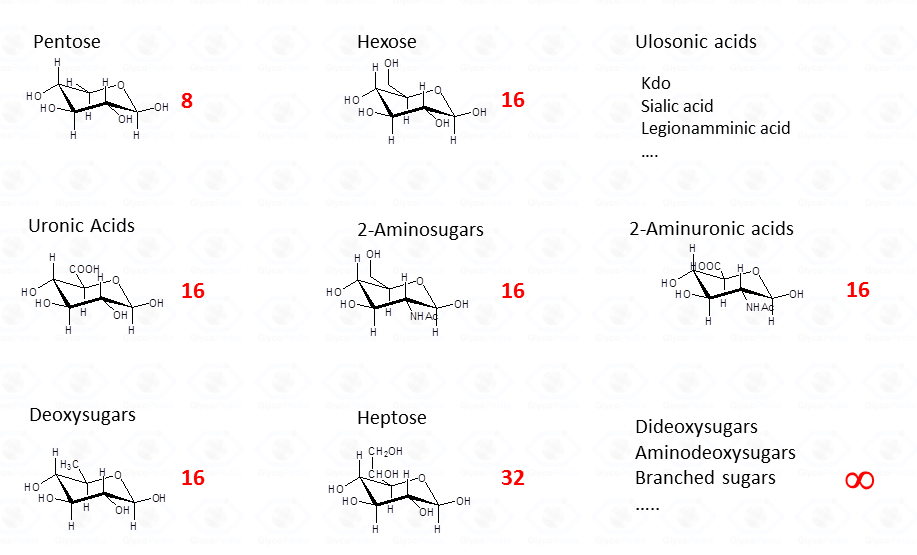Many types of monosaccharides exist in nature, and they can be divided into different categories according to: (i) their nature (neutral, acidic and basic), (ii) the number of constituting carbon atoms (pentose, hexose, heptose, etc), (iii) the number of hydroxyl groups replaced with an hydrogen atom (deoxy, dideoxy, etc.), (iv) the aldose or ketose nature. For each category of monosaccharides, there exists a large number of possible isomers, e.g. 16 different isomers in the case of aldohexoses.

These structural features can occur in the same monosaccharide; for instance, aminuronic sugars contain both acid and basic functions whereas ulosonic acids have a carboxylic function at C-1 and a keto group at C-2. As en enhancement of this naturally occurring complexity, it must be noted that the derivatization protocol used for the analysis may be unsuccessful to identify monosaccharides. Consequently, it is mandatory to combine the results of two different approaches.
The following chapters discuss four types of derivatives. The first two chapters deal with acetylated alditols and acetylated methyl glycosides which are both used to determine monosaccharide composition. The two following chapers deals with two types of derivatives, partially methylated and acetylated alditols and acetylated octyl (or butyl) glycosides, used to establish the linkage pattern of each residue and on its absolute configuration, respectively.These four chapters describe also the rules to interpret the EI-MS spectra of all these derivatives. A data base of the different spectra is provided, to ease the assignment of unknown compounds.
